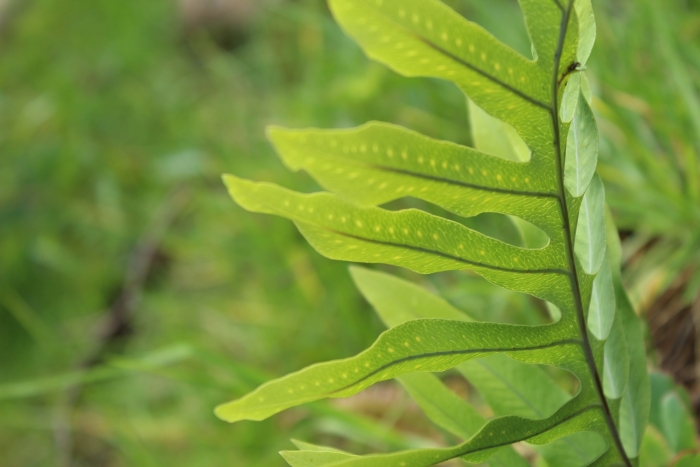Golden Polypody
(Phlebodium aureum)
Golden Polypody (Phlebodium aureum)
/
/

Andrés Ramírez-Barrera
CC BY 4.0
Image By:
Andrés Ramírez-Barrera
Recorded By:
Copyright:
CC BY 4.0
Copyright Notice:
Photo by: Andrés Ramírez-Barrera | License Type: CC BY 4.0 | License URL: http://creativecommons.org/licenses/by/4.0/ | Rights Holder: Andrés Ramírez-Barrera | Publisher: iNaturalist | Date Created: 2019-05-12T13:37:23-07:00 |



















































Estimated Native Range
Summary
Phlebodium aureum, commonly known as Golden Polypody, is an evergreen perennial herb native to tropical and subtropical regions, including the coastal forests, hammocks, and swamp margins in Florida, the Caribbean, and parts of South America. It typically grows as an epiphyte on tree trunks or in rocky crevices, showcasing its adaptability to various substrates. This fern reaches a height of 2-3 feet with a similar spread and is characterized by its arching fronds that can measure up to 2-3 feet long. The fronds are pinnatifid with a unique blue-green to glaucous green color and wavy margins, and the rhizomes are covered in distinctive golden-brown scales.
Golden Polypody is appreciated for its ease of maintenance, air-purifying qualities, and the tropical aesthetic it brings to shaded garden areas or indoor spaces. It is often used in hanging baskets, as a ground cover in shaded gardens, or mounted on trees in a manner similar to orchids. It thrives in humid environments with indirect light and requires well-draining soil that stays consistently moist but not waterlogged. While it can tolerate low light conditions, its fronds will be more vibrant in color when grown in brighter, indirect light. It is relatively pest-free but can be susceptible to scale insects and mealybugs. Due to its invasive nature in non-native habitats, it should be planted with caution and monitored for unwanted spread.CC BY-SA 4.0
Golden Polypody is appreciated for its ease of maintenance, air-purifying qualities, and the tropical aesthetic it brings to shaded garden areas or indoor spaces. It is often used in hanging baskets, as a ground cover in shaded gardens, or mounted on trees in a manner similar to orchids. It thrives in humid environments with indirect light and requires well-draining soil that stays consistently moist but not waterlogged. While it can tolerate low light conditions, its fronds will be more vibrant in color when grown in brighter, indirect light. It is relatively pest-free but can be susceptible to scale insects and mealybugs. Due to its invasive nature in non-native habitats, it should be planted with caution and monitored for unwanted spread.CC BY-SA 4.0
Plant Description
- Plant Type: Fern
- Height: 2-3 feet
- Width: 1-2 feet
- Growth Rate: Moderate
- Flower Color: N/A
- Flowering Season: Non-Flowering
- Leaf Retention: Evergreen
Growth Requirements
- Sun: Part Shade
- Water: Medium
- Drainage: Medium
Common Uses
Bird Garden, Deer Resistant, Low Maintenance, Potted Plant, Rock Garden, Water Garden
Natural Habitat
Native to tropical and subtropical regions, including coastal forests, hammocks, and swamp margins in Florida, the Caribbean, and parts of South America
Other Names
Common Names: Gold-Foot Fern , Golden Serpent Fern , Cabbage Palm Fern , Blue Star Fern , Rabbit-Foot Fern , Hare-Foot Fern , Hartassbräken
Scientific Names: Phlebodium aureum , Polypodium aureum , Polypodium pulvinatum , Pleopeltis aurea , Chrysopteris aurea , Chrysopteris martinicensis , Phlebodium pulvinatum , Chrysopteris grandis , Chrysopteris microdictya , Chrysopteris pulvinata
GBIF Accepted Name: Phlebodium aureum (L.) J.Sm.